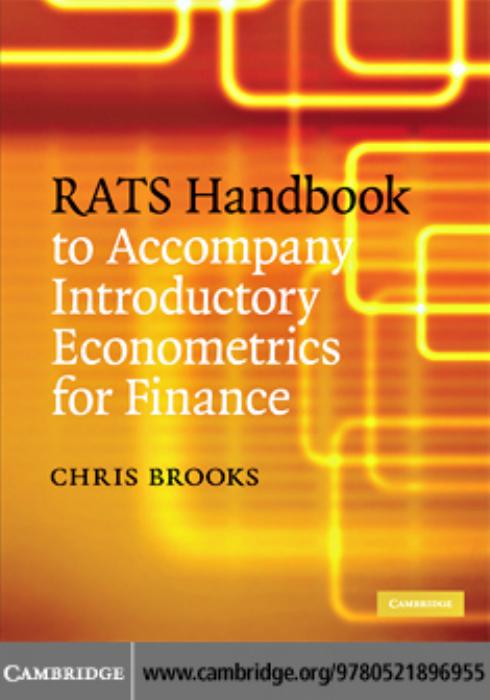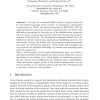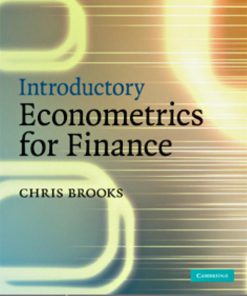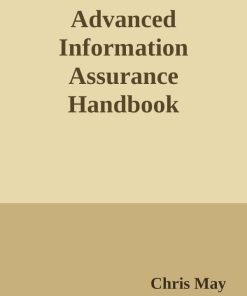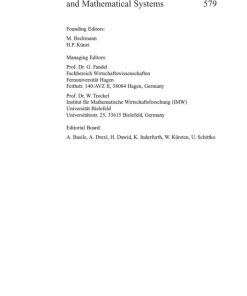RATS Handbook to Accompany Introductory Econometrics for Finance 1st edition by Chris Brooks ISBN 0521896959 978-0521896955
$50.00 Original price was: $50.00.$25.00Current price is: $25.00.
Authors:Chris Brooks , Series:Management [91] , Tags:Business & Economics; Finance; General; Accounting; Econometrics; Statistics , Author sort:Brooks, Chris , Ids:9780521721684 , Languages:Languages:eng , Published:Published:Nov 2008 , Publisher:CAMBRIDGE UNIVERSITY PRESS , Comments:Comments:Written to complement the second edition of best-selling textbook Introductory Econometrics for Finance, this book provides a comprehensive introduction to the use of the Regression Analysis of Time Series (RATS) software for modelling in finance and beyond. It provides numerous worked examples with carefully annotated code and detailed explanations of the outputs, giving readers the knowledge and confidence to use the software for their own research and to interpret their own results. A wide variety of important modelling approaches are covered, including such topics as time-series analysis and forecasting, volatility modelling, limited dependent variable and panel methods, switching models and simulations methods. The book is supported by an accompanying website containing freely downloadable data and RATS instructions.
RATS Handbook to Accompany Introductory Econometrics for Finance 1st edition by Chris Brooks – Ebook PDF Instant Download/Delivery. 0521896959, 978-0521896955
Full download RATS Handbook to Accompany Introductory Econometrics for Finance 1st edition after payment
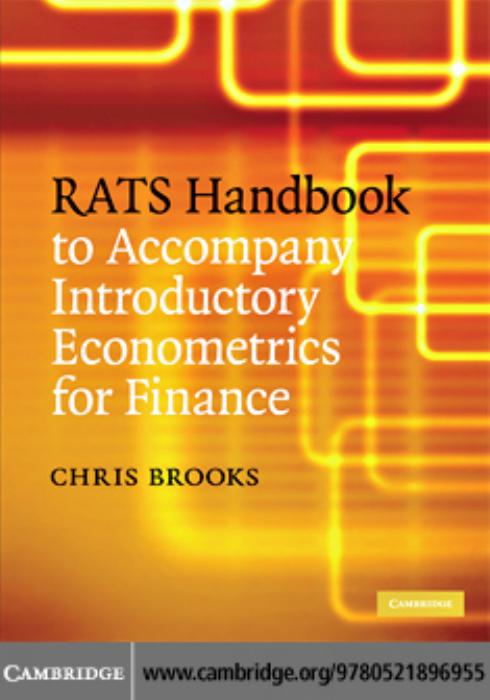
Product details:
ISBN 10: 0521896959
ISBN 13: 978-0521896955
Author: Chris Brooks
Written to complement the second edition of best-selling textbook Introductory Econometrics for Finance, this book provides a comprehensive introduction to the use of the Regression Analysis of Time Series (RATS) software for modelling in finance and beyond. It provides numerous worked examples with carefully annotated code and detailed explanations of the outputs, giving readers the knowledge and confidence to use the software for their own research and to interpret their own results. A wide variety of important modelling approaches are covered, including such topics as time-series analysis and forecasting, volatility modelling, limited dependent variable and panel methods, switching models and simulations methods. The book is supported by an accompanying website containing freely downloadable data and RATS instructions.
RATS Handbook to Accompany Introductory Econometrics for Finance 1st Table of contents:
-
Introduction
- Overview of the RATS software and its use in econometrics.
- Basic principles of econometrics and how they apply to finance.
- A brief introduction to the structure of the handbook and how to use it.
-
Getting Started with RATS
- Installing and setting up RATS software.
- Introduction to RATS syntax and basic commands.
- Understanding the RATS interface and workspace.
- Loading and managing data in RATS.
-
Descriptive Statistics and Data Exploration
- Generating basic summary statistics for financial data.
- Creating and interpreting graphical representations of data.
- Using RATS to calculate mean, variance, standard deviation, skewness, and kurtosis.
- Exploring data trends and outliers using statistical tools in RATS.
-
Simple Linear Regression
- Introduction to simple linear regression models.
- Estimating regression parameters using RATS.
- Interpreting regression output and diagnostics.
- Graphical representations of regression results.
- Model assumptions and their implications for financial data.
-
Multiple Linear Regression
- Estimating multiple regression models using RATS.
- Interpreting coefficients, t-tests, and p-values in multivariate contexts.
- Checking multicollinearity, heteroscedasticity, and other issues in multiple regression.
- Model specification and testing for omitted variables.
-
Time Series Analysis
- Introduction to time series data and its applications in finance.
- Working with time series data in RATS: importing and preparing data.
- Autocorrelation and the use of lagged variables.
- Estimating AR, MA, and ARMA models using RATS.
- Time series diagnostics and model evaluation.
-
Modeling Volatility
- Introduction to volatility models and their importance in finance.
- Estimating ARCH and GARCH models in RATS.
- Interpreting volatility estimations and understanding their implications.
- Testing for ARCH effects and volatility clustering.
-
Panel Data Models
- Introduction to panel data and its applications in finance.
- Fixed effects and random effects models in RATS.
- Estimating and interpreting panel data regressions.
- Addressing issues like unobserved heterogeneity and endogeneity in panel data.
-
Instrumental Variables and Two-Stage Least Squares
- Introduction to the need for instrumental variables (IV) in econometrics.
- Implementing IV and two-stage least squares (2SLS) in RATS.
- Interpreting IV estimates and addressing potential endogeneity issues.
- Performing tests for instrument validity.
-
Model Selection and Testing
- Evaluating model fit using RATS: R-squared, Adjusted R-squared, AIC, and BIC.
- Performing hypothesis tests: t-tests, F-tests, and likelihood ratio tests.
- Model comparison and selection criteria.
- Using RATS to perform tests of overidentification and specification errors.
-
Forecasting and Simulation
- Introduction to forecasting techniques in econometrics.
- Using RATS to estimate forecast models and predict future values.
- Generating simulations and forecasting error analysis.
- Evaluating the accuracy of forecast models using holdout samples.
-
Advanced Econometric Techniques
- Introduction to more advanced econometric methods, such as co-integration, VAR, and VECM models.
- Estimating and testing for co-integration using RATS.
- Working with vector autoregressive (VAR) models and their application in financial forecasting.
- Understanding error correction models and their uses in finance.
-
Working with Financial Data in RATS
- Importing and cleaning financial data from different sources (e.g., stock prices, exchange rates).
- Data transformations and formatting for econometric analysis.
- Working with financial time series: returns, volatility, and other financial indicators.
- Practical tips for handling large datasets in RATS.
-
Conclusion and Further Reading
- Summary of key concepts in econometrics for finance.
- Additional resources for learning econometrics and using RATS.
- Suggestions for further study and advanced econometric techniques.
People also search for RATS Handbook to Accompany Introductory Econometrics for Finance 1st:
rats handbook to accompany introductory econometrics for finance
how to introduce rats together
how to introduce rats
how to introduce rats to each other
rat book pdf
You may also like…
eBook PDF
Introductory Econometrics for Finance 2nd edition by Chris Brooks 052169468X 9780521694681
eBook PDF
Advanced Information Assurance Handbook 1st edition by Chris May ISBN 012374365X 978-0123743653

